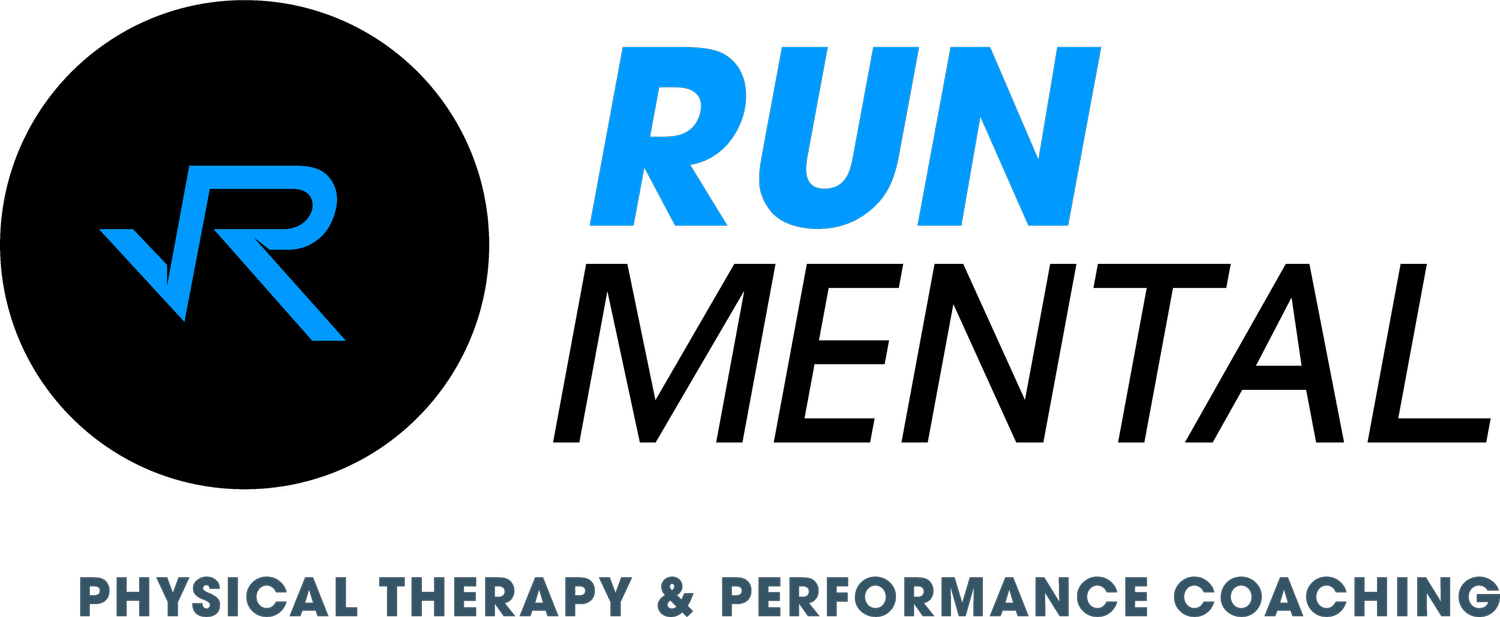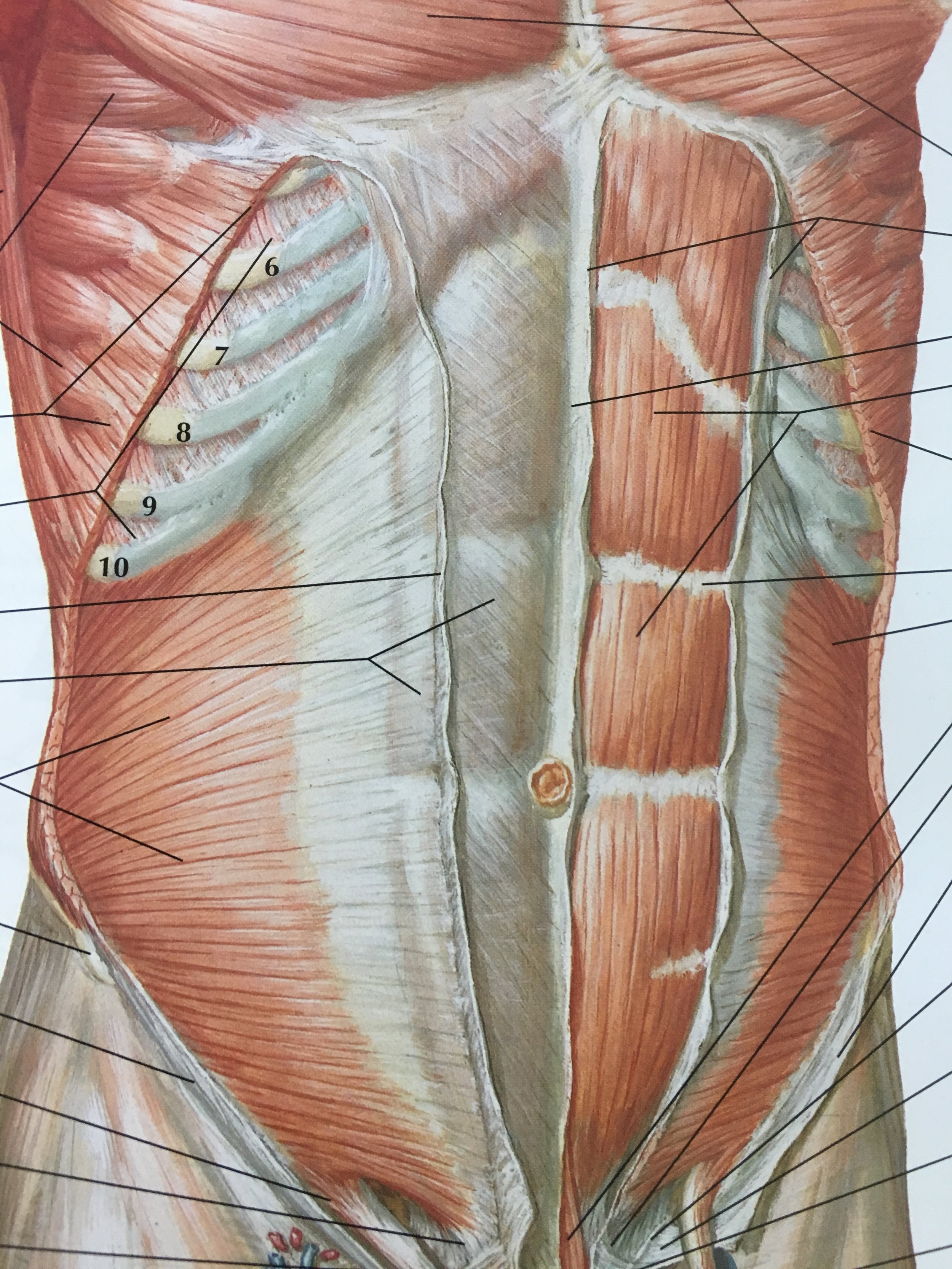Core for Runners: Looking Beyond Crunches and Sit-ups
Originally posted April 20th, 2019
The importance of having a strong “core” likely came from some work in the mid-late 90’s by Hodges et. al. showing alterations in the firing pattern of the transverse abdominus muscle in those with low back pain. Thus, began the revolution of implementing core work to prevent and treat low back pain. We now know that this relationship is controversial at best due to the multifactorial nature of pain development. We also don’t know if the alterations in the firing patterns were a contributing factor or a result of the pain. That, however, is a great topic for another post. While core work may be controversial in the realm of pain, it is certainly not as much so in the performance world. Being able to engage the core musculature and create stiffness is very important for the demands of athletics.
What is it?
Let’s start out by explaining what the core is. Generally speaking, the core is referred to as the muscles that lay between the pelvis and the rib cage such as the abdominals and back extensors. We must acknowledge that there is a front, back and side to the core wrapping around an entire 360deg. Due to the fact that these muscles are intimately related to and change in their ability to function based on adjacent muscles and bony positions, many have expanded what they refer to the core as any muscle attaching to the pelvis or ribs. Thus, some will consider the core to run from the knees to the shoulders. That’s a lot to work on! But it doesn’t have to be complex. I tend to take a hybrid outlook and think of the core from the hips to the rib cage for simplicity sake.
What does it do?
The core has two functions:
1. Control spinal motion such as bending and twisting.
2. Create stiffness by resisting bending and twisting to allow efficient energy transfer from the legs to the arms and vice versa
Being that running is primarily a mid-range activity with relatively limited motion needed at the spine compared to many other athletic events, we are most concerned with the second function. Therefore, we want to be able to create a good amount of stiffness while the legs and arms are moving. With that being said, we do want some movement though. The most efficient stride lays somewhere in between 100% stiffness and being like Gumpy. Staying away from 100% stiffness also helps with our breathing as the abdominal region can then expand outward as the diaphragm depresses during inhalation.
Also important to note here is that when we take focus away from the primary activity, such as running, and put some of it towards something else, like engaging your core, that actually decreases our efficiency (applies to the glutes too). Trust me, if you are upright and moving about then the core musculature is doing exactly what it needs to. Worry less about the core and more about the process of training. It’s time better spent for your end goal of a PR, race, or even running pain free.
Training it…
First to note is that your core is always on. There is always some level of activity in the muscles. This is how we are able to stay upright when sitting, standing, running, etc. With that understanding we can start to look at non-traditional core exercises as being “core” exercises. Anything applying axial or compressive force downward such as barbell squats and deadlifts will require a greater amount of core activation to keep you upright. Don’t go throwing out your beloved core routines yet though! Some of those exercises are probably great! You can let this provide you permission to drop your 10min routine to say 3-5min.
We also have to look at the SAID principle (specific adaptation to imposed demands) which states that there are very specific adaptations that occur with the demands that are placed on tissues in the body. Therefore, squats and deadlifts may get our core strong, but may lack the ability to hold a plank for 1min. On the flip side, a 10min core routine may give you good endurance, but leave you lacking on the strength side. While a distance runner may not think that is important, if there are any performance goals such as a PR or podium spot then it becomes very important. As we run faster, there is a greater amount of ground reaction force and therefore more that needs to be tolerated and controlled by the body. It’s not an either or situation though, but more how can we best blend the two in order to best compliment and optimize our running.
So what are we to do?
With our running we have fast days and we have slow days, each having their own purpose. Working the core or any body region for that matter is not too different. We need to have exercises in our strength program that works on sustained holds or higher repetitions to build endurance as well as those that help truly build the strength such as the above mentioned barbell lifts. With my athletes, I personally like to include those that are a little more “core” specific between sets of other exercises primarily targeting other areas. That way we get the best of both worlds, but in less time and often times expending less energy. Thus, we can focus more on recovering from all the hard work. I will add that carries get programmed alone due to their intensity and that they work nearly everything when done right. Some of my favorites are shown below. Give them a try and have fun!
Farmer March
Side plank + Abduction
Bridge + SLR
High plank + March
Need help deciding what exercises are best for you?
Our coaching services are outfitted to meet those needs through an in-depth evaluation of you and your goals. Check out our strength training services here and start strength training that truly benefits your running!



